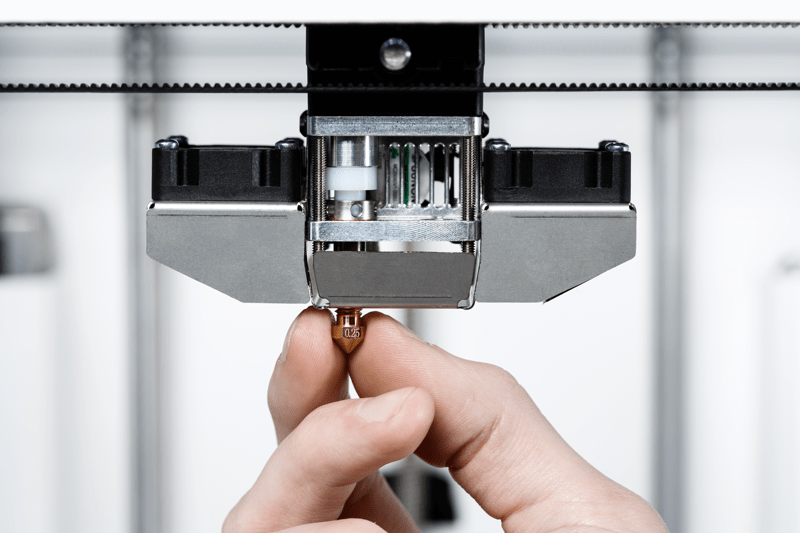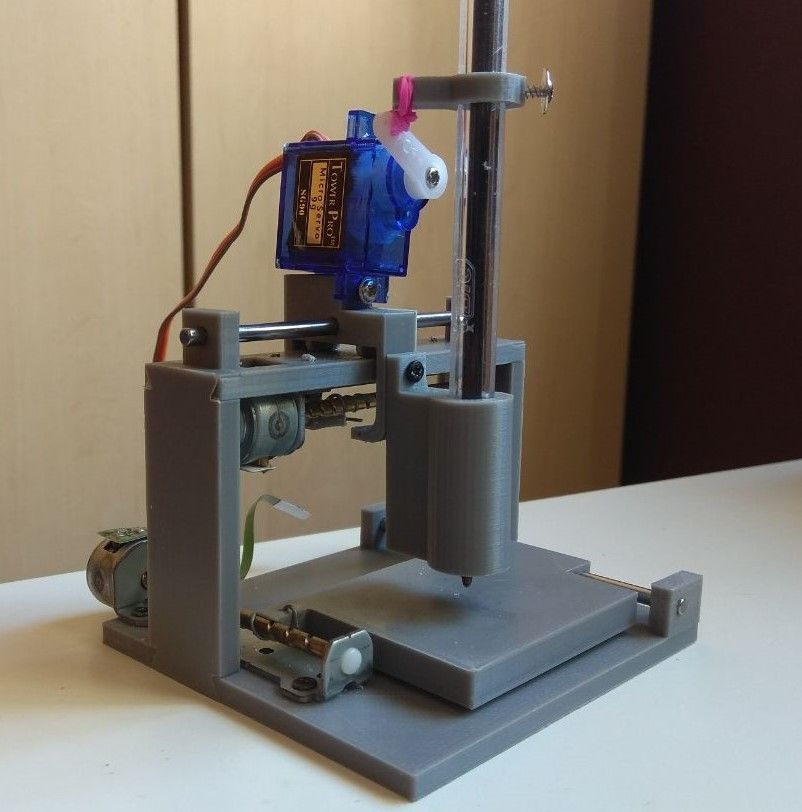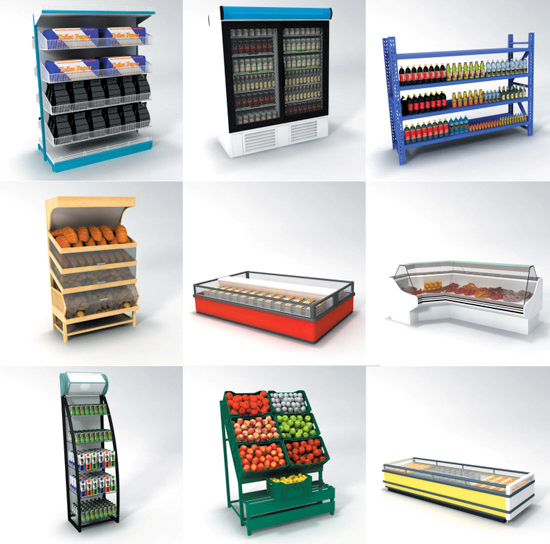3D printer in manufacturing
The evolution of 3D printing in manufacturing
Paul Benning, Chief Technologist at3D Print HP Inc. discusses the current technology trends within the manufacturing industry relating to 3D printing...
Paul Benning, Chief Technologist at 3D Print HP Inc. discusses the current technology trends within the manufacturing industry relating to 3D printing.
What is 3D printing?
3D printing is a manufacturing process that produces objects in accordance to a 3D digital model. By using a 3D printer and adding material layer by layer, such as plastics and metals, complex objects can be produced both rapidly and at low cost, in short runs or as one-of-a-kind parts. HP Multi Jet Fusion 3D technology enables customers to produce complex parts with controllable physical and functional properties at each point and provides speed, quality and strength throughout the manufacturing process for a range of industries and applications.
How has 3D printing evolved over the years?
We’re on the cusp of the 4th Industrial Revolution, where physical and digital technologies will radically alter how companies conceive, design, produce, distribute and repair nearly everything. The increased global demand for sustainable solutions and customised products has resulted in a surge in demand for 3D-printed parts and products. Technological innovations in the field have halved costs while delivering twice the performance. As the 3D printing sector moves beyond prototyping, use of this technology, particularly in supply chains, is becoming increasingly widespread.
In 2018, HP launched Metal Jet technology, the world’s most advanced 3D printing technology for the high-volume manufacturing of production-grade metal parts. It delivers mechanically functional final parts with up to 50x more productivity than other 3D printing methods, and at significantly lower cost compared to other binder jetting systems.
As we see more customers scale for production and further collaboration through a growing ecosystem of partners, the possibilities are growing for a new era of manufacturing.
What are the current trends in 3D printing?
A trend we’ll see is the accelerated impact of digital manufacturing take hold in the form of production applications, particularly across the automotive, industrial and medical sectors. In the auto sector, we’ve seen an increased focus on developing production-grade materials for auto applications as 3D printing gravitates from prototyping to full production of final parts and products. Additionally, as new platforms such as electric vehicles enter mass production, HP Metal Jet is expected to be leveraged for applications such as the light weighting of fully safety-certified metal parts. Industrial 3D manufacturing also enables the automotive industry to produce applications in new ways that were previously impossible, along with the ability to design application-specific parts for individual systems or models.
What innovative technology have you seen being used with 3D printing?
One really powerful example of 3D printing we’ve seen in the last few weeks is how 3D suppliers and digital manufacturers are coming together to help produce vital applications to help fight COVID-19. HP and its global network of partners and customers are printing crucial parts such as ventilator valves, face mask adjusters and hands-free door handles - for local hospitals and healthcare providers around the world.
Beyond how 3D is supporting the current situation at hand, we’ve seen myriad ways that the technology has been used – everything from customised prosthetic limbs, to parts that are used in cars, to invisible braces helping people to achieve their desired smile.
With industries facing increased customer centricity when it comes to the services they provide, how can 3D printing help to drive customer centricity?
One of the major benefits of 3D printing is the ability to customise products and parts fully for the end user. This may be in the form of design preference, or it could serve a more practical purpose such as improving the fit or usability of a product. For example, 3D printing makes it easy to customize prosthetic limbs and shortens the production time from weeks to days, and it can deliver custom-fitted and individualized footwear, including insoles, through innovative 3D scanning, dynamic gait analysis and manufacturing technologies.
This may be in the form of design preference, or it could serve a more practical purpose such as improving the fit or usability of a product. For example, 3D printing makes it easy to customize prosthetic limbs and shortens the production time from weeks to days, and it can deliver custom-fitted and individualized footwear, including insoles, through innovative 3D scanning, dynamic gait analysis and manufacturing technologies.
How can 3D printing make manufacturing more agile?
By allowing consumers to dictate demand, 3D printing lends itself to increased supply chain mobility, flexibility and adaptability, therefore reducing costs and waste. Companies no longer have to predict consumer demand by gambling on how much of a product they will sell; 3D printing ensures the infinite flexibility as they are able to print what they need.
SEE ALSO:
-
Industry 4.0: managing the Cultural Impact in Manufacturing
-
Oracle: a modern platform for smart connected factories
-
PwC: digital factories shaping the future of manufacturing
-
Read the latest issue of Manufacturing Global here
3D printing also allows manufacturers to prototype more successfully, as they can print a new model/part with every advancement or amendment of the design, through a simple tweak on the software, printed instantly.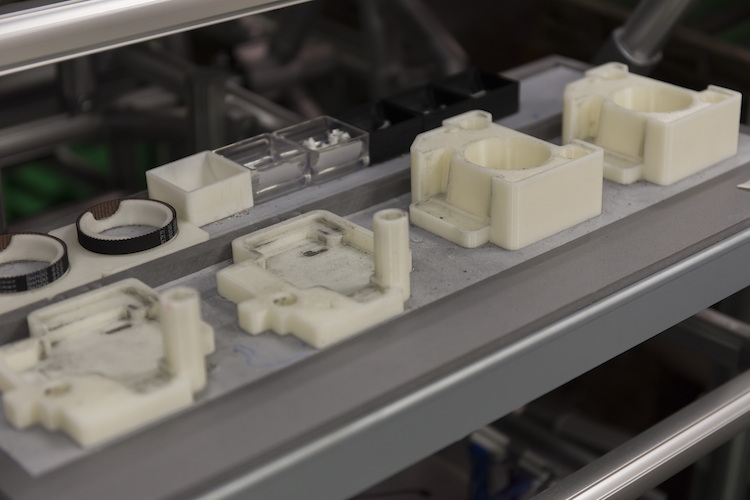 Thus, saving time and money rather than if they had to produce new moulds each time.
Thus, saving time and money rather than if they had to produce new moulds each time.
3D printing also allows for incredible volumes to be produced in a short time frame. HP customer SmileDirectClub uses Mult Jet Fusion 3D printing solutions to produce more than 50,000 personalised moulds each day, and anticipates printing nearly 20 million mouth molds over the next 12 months alone.
In 2018, more than 10 million parts were produced using HP Multi Jet Fusion technology worldwide.
How can 3D printing benefit the manufacturing industry?
3D printing completely reinvents the way things are conceived, designed, produced and distributed, significantly lowering development and production costs, immensely simplifying logistics, and lowering carbon footprint. It holds great potential to revolutionise supply chains, and we are beginning to see an increase in the number of companies who turn to this form of manufacturing in order to stay competitive and create products faster.
3D printing will be the catalyst for significant shifts within the global manufacturing sector, and leaders will be defined by their ability to harness its full disruptive power. In a fully digital future, the production of goods will be driven closer to the consumer, democratizing manufacturing on a worldwide scale and allowing products to be mass-customized.by traditional processes, designers will be free to create entirely new categories of products, as the line between ideas and physical reality erodes. And manufacturers, no longer tethered to overseas factories, will shorten supply chains with a newfound ability to custom-produce anything, anywhere.
What are the challenges of 3D printing?
The most significant hurdle is the change of mindset. It is crucial to think about designing for 3D from the first stages of product development, to think about the wider implications of how development is staged to full scale production, and how supply chains can be further optimized.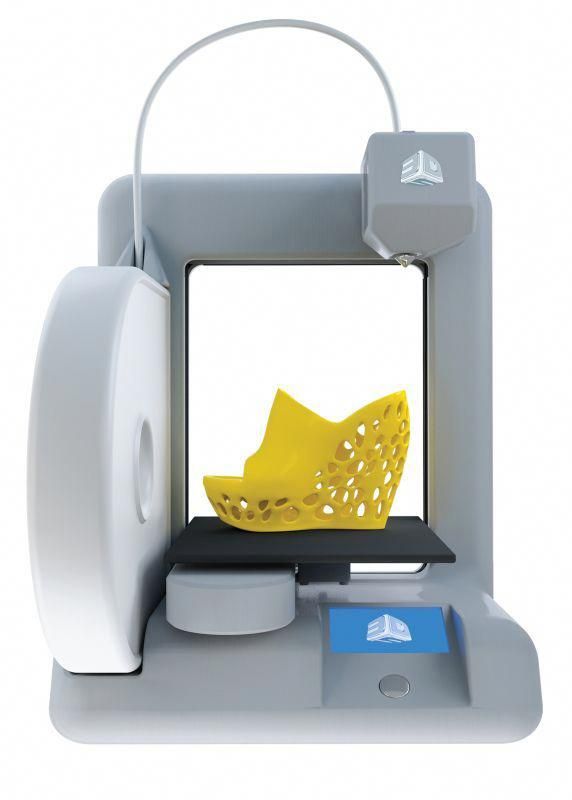 There are deep, engrained sense of limits and hurdles for those who have worked decades in traditional manufacturing. With 3D manufacturing, there is almost a re-learning process that needs to take place – the vast majority those limits no longer apply. The design possibilities are limitless. And, of course, there are new skills that must be developed to fully leverage these possibilities. For engineers, new elements of the design process will be introduced into their roles where they will need to learn the mechanics of 3D printing to become experts in the processes and best support operational functions during production.
There are deep, engrained sense of limits and hurdles for those who have worked decades in traditional manufacturing. With 3D manufacturing, there is almost a re-learning process that needs to take place – the vast majority those limits no longer apply. The design possibilities are limitless. And, of course, there are new skills that must be developed to fully leverage these possibilities. For engineers, new elements of the design process will be introduced into their roles where they will need to learn the mechanics of 3D printing to become experts in the processes and best support operational functions during production.
What applications of 3D printing have you seen within the industry?
3D printing is being used in a variety of industries including automotive, manufacturing, healthcare and consumer goods. Alongside the incredible efforts to help support the COVID-19 pandemic, I’ve also seen some fantastic applications in the commercial sector. 3D printing is being used by major car manufacturers to produce gear sticks and safety gloves, fashion designers are producing 3D printed handbags and shoes and companies are printing custom foot insoles with just a scan of a patient’s foot. The possibilities really are endless and I’m looking forward to seeing what comes out of the industry over the next few years.
3D printing is being used by major car manufacturers to produce gear sticks and safety gloves, fashion designers are producing 3D printed handbags and shoes and companies are printing custom foot insoles with just a scan of a patient’s foot. The possibilities really are endless and I’m looking forward to seeing what comes out of the industry over the next few years.
The work being done by Jaguar Land Rover as they advance EV development, or Vestas VBIC, the largest provider of wind turbines in the world, are significant examples of how 3D printing is enabling industries to move seamlessly from prototyping to production, with incredible flexibility to make improvements in near real time.
For more information on manufacturing topics - please take a look at the latest edition of Manufacturing Global.
Follow us on LinkedIn and Twitter.
3D Printing in Manufacturing - Challenges and Advantages
3D Printing in Production
Low volume manufacturing
Moving across to 3D printing will make it possible for businesses to consider short-run part production, where focused product teams can launch new products more frequently. They will be able to work beyond the realms of their imagination and certainly beyond the restraints that come with traditional methods. It delivers an agile development process for physical parts and has the ability to accelerate the production and the time it takes to get to market.
They will be able to work beyond the realms of their imagination and certainly beyond the restraints that come with traditional methods. It delivers an agile development process for physical parts and has the ability to accelerate the production and the time it takes to get to market.
There is no doubt that 3D printing is way ahead of conventional methods when it comes to manufacturing the first several hundred parts. But is 3D printing also suitable for manufacturing on large scale?
High volume manufacturing
3D printing is a technology that is developing and growing faster than most other technologies due to the way it can influence manufacturing processes and help businesses perform to a higher level. A production line that is set up for 3D printing is easier to alter than that of a production line for traditional manufacturing, making 3D printing a feasible option for many reasons.
The whole production line can be adjusted and adapted with the speed of the printing production line.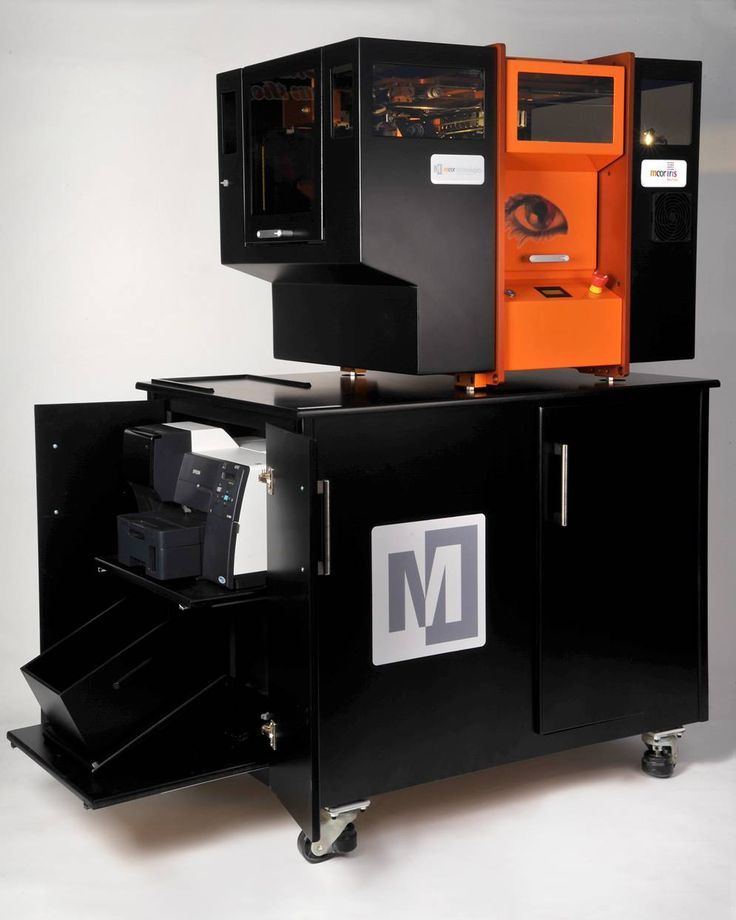 Therefore, improvements to machinery, adjustments to the print speed or even a change of product can be made almost instantly. When you consider this against older methods, it can take several weeks or months to make the changes and then begin producing again.
Therefore, improvements to machinery, adjustments to the print speed or even a change of product can be made almost instantly. When you consider this against older methods, it can take several weeks or months to make the changes and then begin producing again.
It is inevitable that the capabilities that come with 3D printing and the way in which technology is evolving will enable businesses to adopt this new way of producing products or parts and it is likely that this adoption is going to grow well in the future.
What are the advantages of using 3D printing in manufacturing?
1. Reduction in costs
Traditional manufacturing methods are notoriously expensive, whereas the 3D printing process makes the creation of parts products cheaper and more accessible. Unlike traditional manufacturing where many different people may be required to operate a number of machines or a production line is required to piece together the product, 3D printing removes this. Each 3D printer will require an operator to start the machine before it begins an automated process of creating the uploaded design.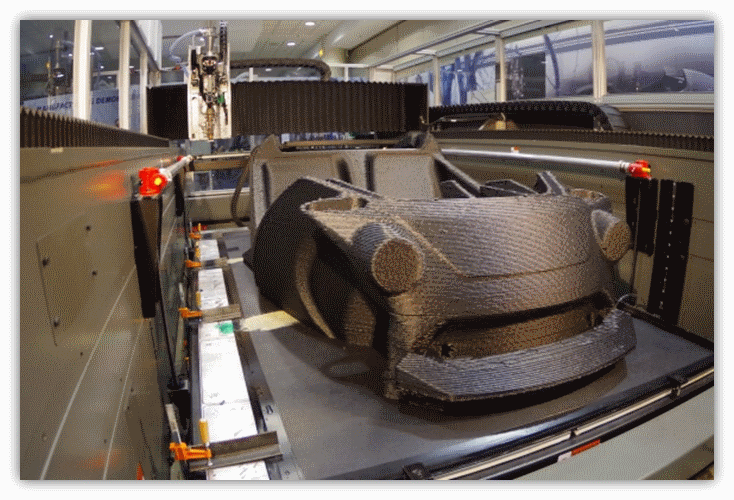 Therefore, when using 3D printing for manufacturing, the labour costs are significantly lower as there is no need for skilled machinists or operators to form part of the process.
Therefore, when using 3D printing for manufacturing, the labour costs are significantly lower as there is no need for skilled machinists or operators to form part of the process.
2. Reduction of risks
When businesses have the ability to confirm a design before committing it to production, it can help to remove the risk of errors, wasted materials and money. Creating products with 3D printing can help to increase confidence, especially when you consider that a 3D prototype is easier to redesign and alter than anything that has been created using a traditional method.
When it comes to setup costs, manufacturers won’t have to produce so much of a product in order to justify the setup costs. The traditional methods of production often relies on the efficiencies of mass production and requires a large number of assembly workers, whereas, 3D printing requires the filament material and not a lot more to fulfil an order.
3. Failure is cheaper and faster
3D printers will not need to be retooled between production runs. The speed at which a 3D printer can assemble could be deemed to be slower than that of a traditional assembly line. However, when you factor in machinery problems that can stop production and human error, there is more that can go wrong with traditional manufacturing.
The speed at which a 3D printer can assemble could be deemed to be slower than that of a traditional assembly line. However, when you factor in machinery problems that can stop production and human error, there is more that can go wrong with traditional manufacturing.
4. Time to market
3D printing makes it possible to develop ideas at a faster pace. In some instances, it could be possible for 3D concepts to be designed and printed on the same day but in terms of large-scale manufacturing, it is certainly faster than conventional methods. This can help companies to reduce manufacturing time from months to days while ensuring that they remain ahead of their competitors.
5. Build and grow
For businesses that adopt 3D manufacturing, it is possible to continue to grow and evolve through the production of items that have been created from their imagination. There are no limits when it comes to 3D manufacturing because things can be created virtually and then printed in a very short time frame. Therefore, for any business, a product can go from an idea, to a concept right through to the finished part.
Therefore, for any business, a product can go from an idea, to a concept right through to the finished part.
6. No Limitations in geometries
For many years, standard manufacturing techniques have held back the design of products. However, with many improvements made already and more to come in the future, the 3D manufacturing process can create an endless list of possibilities. Geometries that were once difficult can now be achieved such as holes that change direction or square interior cavities. These kinds of designs have become possible and simpler to construct.
7. Less waste
As this is a relatively new technology that is gaining momentum, the material cost can still remain high. However, the range of materials is growing and this makes it possible for the price to decrease over time. But, in comparison to traditional methods, the overall cost is a lot lower. The manufacturing process can result in a lot of waste, particularly where traditional manufacturing is concerned.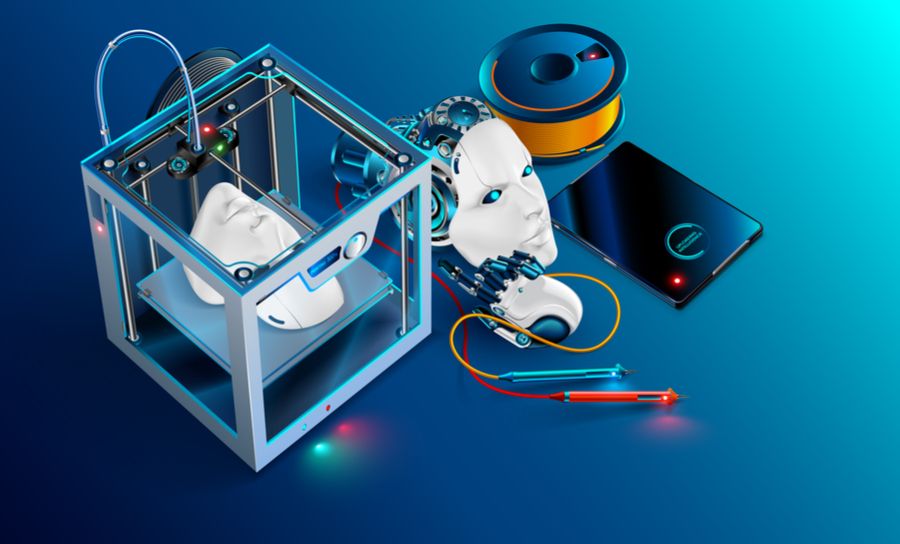 However, this is where 3D printing for manufacturing can transform the amount of waste, because of the way in which it uses resources more efficiently.
However, this is where 3D printing for manufacturing can transform the amount of waste, because of the way in which it uses resources more efficiently.
When it comes to using 3D printing for manufacturing, a 3D printer will only use the material that passes through the extruder of the printer and that is used for the assembly of the product.
In comparison to injection–molds, often there is a requirement to use additional materials to fill the molds. In the majority of mass production needs, 3D printing will deliver a lower amount of waste (for example the support material) than traditional manufacturing.
8. Less storage space
Many industries require businesses to store the parts and products that they need or sell. This means that a significant amount of storage space is required to house goods that can sit on a shelf for months or even years. This costs a lot of money. By using 3D printing for manufacturing, costs can be cut by reducing the amount of storage space that is needed.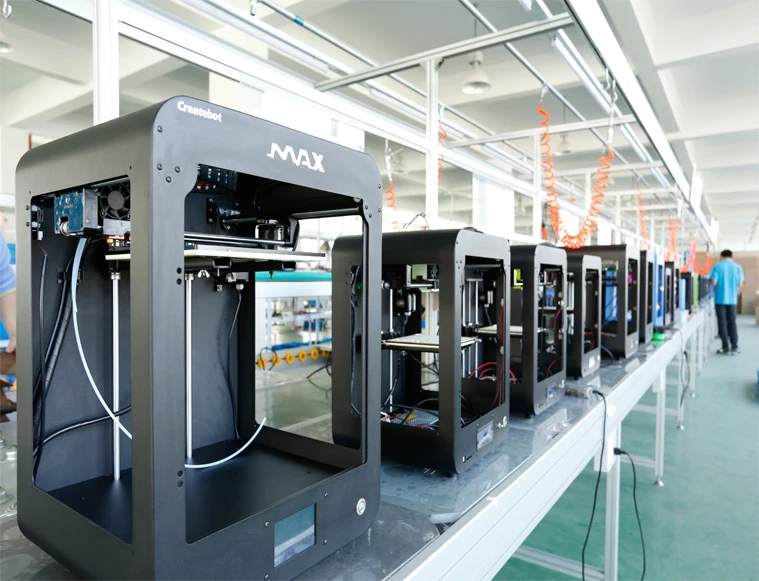 3D printing makes it possible for goods to be made as they are sold. This means that there will be no overproduction and reduced storage costs.
3D printing makes it possible for goods to be made as they are sold. This means that there will be no overproduction and reduced storage costs.
How it works. Industrial 3D printer
Photo: Alexander Utkin
Additive technologies are gradually changing the industrial order. Products that can be made using 3D printing are becoming more functional and larger. The number of such parts in the composition of complex equipment is growing. More and more enterprises supplement their production with additive equipment. 3D printers save money and time on the production of parts, they are more environmentally friendly than traditional machines. Using the example of metal 3D printing, which is actively used at Rostec enterprises, we talk about the advantages of industrial printers and the principle of their operation.
Layer by layer
Metal-based additive manufacturing (from Latin addere "to add") is one of the fastest growing technologies in the manufacturing industry.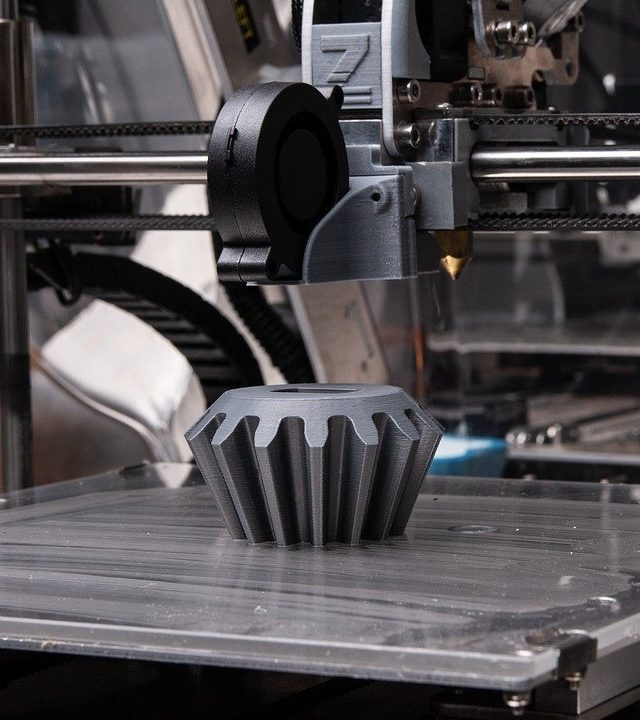 This is a method of creating parts by adding material to a substrate in stages, also called industrial 3D printing. Unlike traditional production (for example, turning or milling), where everything superfluous is cut off from the workpiece, in additive production, on the contrary, the object is gradually created from the desired material, as if grown. The main areas of application for 3D metal printing are prototyping, aerospace, mechanical engineering, instrument manufacturing, medical implants, etc.
This is a method of creating parts by adding material to a substrate in stages, also called industrial 3D printing. Unlike traditional production (for example, turning or milling), where everything superfluous is cut off from the workpiece, in additive production, on the contrary, the object is gradually created from the desired material, as if grown. The main areas of application for 3D metal printing are prototyping, aerospace, mechanical engineering, instrument manufacturing, medical implants, etc.
The main advantages of metal 3D printing are the ability to create objects of complex shapes, reducing the weight of parts without compromising strength, shorter production time, cost-effectiveness and environmental friendliness of the method. Indeed, 3D printers work with a minimum of waste, and special cleaning technologies make it possible to reuse the remnants of raw materials.
3D metal printing allows you to create complex one-piece designs. This makes it possible to exclude many technological operations, such as welding, assembly. 3D printing allows you to combine 30-40 elements in one node without losing functionality and create parts that are simply impossible to obtain on conventional machines.
This makes it possible to exclude many technological operations, such as welding, assembly. 3D printing allows you to combine 30-40 elements in one node without losing functionality and create parts that are simply impossible to obtain on conventional machines.
How a 3D printer works
Metal 3D printing is a general definition for a number of technologies. In general, any technology can be called this when a metal object is created layer by layer using sintering, melting or welding processes. A common type of metal 3D printing is selective laser melting (SLM, Selective laser melting), when a metal powder is fused using a powerful laser. Consider the operation of an industrial printer using this technology as an example.
When using any type of printing, before working with a metal 3D printer, we need a three-dimensional model of the part to be manufactured. It is created using CAD programs - computer-aided design systems. Then the digital model is converted into the STL stereolithographic format and loaded into special software, which divides the model into very thin, 20 to 100 micron thick, horizontal layers, determines the necessary supports, and performs other preparatory work.
Next, we go directly to the printer itself. The chamber of the device is first filled with an inert gas (such as argon) to minimize the oxidation of the metal powder, and then heated to the optimum temperature.
A thin layer of metal powder is spread over the build platform and a high power laser travels at a predetermined speed across the component's cross section, fusing the metal particles together and creating the layer. When the fusion process is completed, the platform moves down one layer thickness and the device spreads another thin layer of metal powder. The process is repeated until the part is completely built.
Parts are usually attached to the assembly platform through supporting structures - supports. The support is necessary to reduce the deformation that can occur due to high processing temperatures, and also removes excess heat. In metal 3D printing, the support is made from the same material as the part and is usually an openwork structure that is removed after the part is created.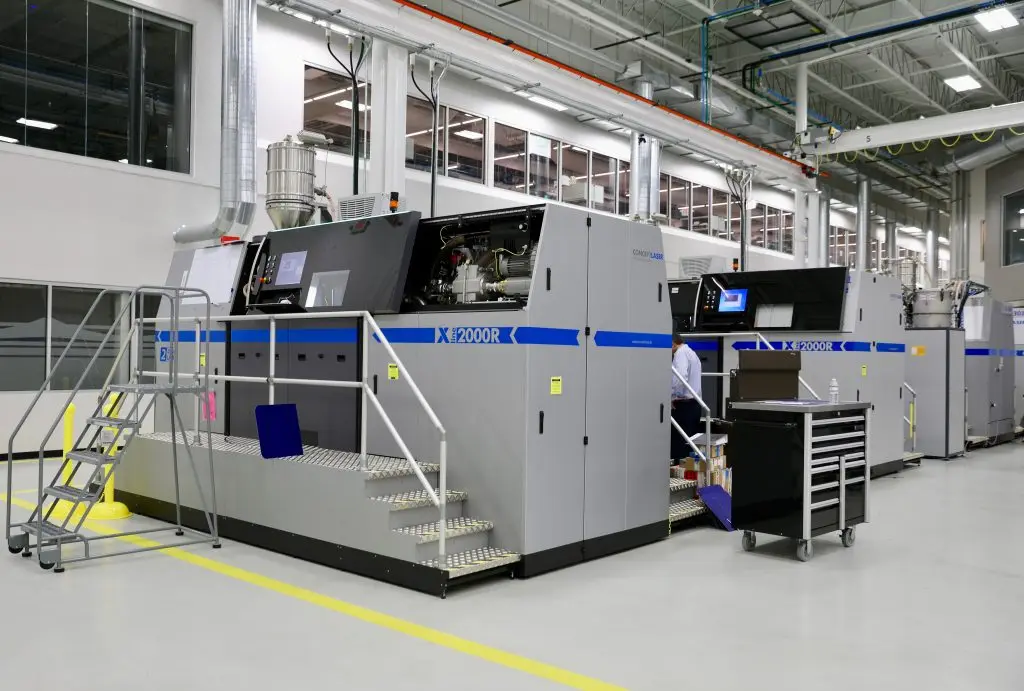
After printing is completed, the chamber is cooled to room temperature, excess powder is removed manually. Then the part, together with the platform, is removed from the chamber, subjected to heat treatment and mechanically separated from the platform. After that, all the necessary actions for finishing the part are carried out.
About the Rostec Center for Additive Technologies
Metal 3D printing and other types of additive manufacturing are actively developing at the enterprises of the State Corporation. The integration of these processes within Rostec is carried out by the Center for Additive Technologies (TsAT), created on the basis of holding corporations of the aviation complex. The shareholders of the organization are the holdings UEC, Technodinamika, KRET and Russian Helicopters.
The center has been operating for more than three years and today is the largest enterprise in Russia specializing in full-cycle industrial 3D printing. Parts for the largest domestic aviation projects are created here, such as the PD-14, PD-35, VK-650V, VK-1600V engines, the Ansat helicopter, etc.
Parts for the largest domestic aviation projects are created here, such as the PD-14, PD-35, VK-650V, VK-1600V engines, the Ansat helicopter, etc.
Demonstrator engine VK-1600V at MAKS-2021. Photo: Viktor Molodtsov
At the recently held in the Zhukovsky International Aviation and Space Salon MAKS-2021 near Moscow, several developments using parts created at the Center were presented at once. One of the premieres of the salon was the VK-1600V demonstrator engine for the Ka-62 helicopter, about 10% of whose parts were printed on a 3D printer. And in the VK-650V demonstrator engine for the Ka-226T helicopter, the share of parts printed in the TsAT will already be about 15%. Also at MAKS, Mi-8/17 and Mi-171A3 helicopters were demonstrated, the blanks for the parts of which were created by the Center. As a result of optimization, it was possible to achieve a reduction of up to 30% in the mass of parts and a 50% reduction in the estimated time for finishing machining in comparison with traditional methods.
Possibilities of 3D printing in small-scale production
A bit of history
Modern desktop 3D printing began just over 10 years ago with the emergence of the RepRap enthusiast community. The goal of the project was to "self-copy", replicate the components of the 3D printers themselves. The task was to small-scale production of 3D printers on the 3D printers themselves. This idea was picked up and developed by the Czech engineer and entrepreneur Josef Prusa. He created the largest 3D printing farm to print plastic parts produced by his 3D printer factory. The total number of printers in his factory reaches 1000 pieces, this achievement was even registered in the Guinness Book of Records.
In this case, I would note Josef's marketing talent, because his company produces about 100 thousand printers a year and its production can hardly be called small-scale. However, he continues to print plastic components for his printers on them. Thus, their reliability is emphasized, because printing is part of the testing process, on the one hand, and on the other hand, it demonstrates to customers the quality of models made on a 3D printer. The effectiveness of this approach, from the point of view of the production itself, is negligible. One injection molding machine would do the job easily, saving a lot of space and electricity, and there would be no need for a large number of jobs.
Thus, their reliability is emphasized, because printing is part of the testing process, on the one hand, and on the other hand, it demonstrates to customers the quality of models made on a 3D printer. The effectiveness of this approach, from the point of view of the production itself, is negligible. One injection molding machine would do the job easily, saving a lot of space and electricity, and there would be no need for a large number of jobs.
3D printing capabilities for low volume production
So what are the possibilities of desktop 3D printing for small-scale production? I note right away that this article is about desktop 3D printers. I will not consider industrial systems in it, since they are in a different price category, both for the equipment itself and for printing materials.
To begin with, it is worth talking about what can be produced on 3D printers. Usually we are talking about small plastic elements, plugs, clamps, housings, holders and other similar elements. The choice is to order a mold or 3D print these elements. It is easy to make such a choice by calculating the cost of the mold, the cost of products obtained on an injection molding machine and the cost of printing the same product on a 3D printer of the required circulation. You need to understand how many units of production per unit of time you need to produce and, accordingly, how many and which 3D printers will be needed for this task. Having made such an initial analysis and having previously understood that 3D printing is what suits you, you should carefully start choosing equipment.
The choice is to order a mold or 3D print these elements. It is easy to make such a choice by calculating the cost of the mold, the cost of products obtained on an injection molding machine and the cost of printing the same product on a 3D printer of the required circulation. You need to understand how many units of production per unit of time you need to produce and, accordingly, how many and which 3D printers will be needed for this task. Having made such an initial analysis and having previously understood that 3D printing is what suits you, you should carefully start choosing equipment.
If you already know what you will print, the choice becomes easier. If you plan to produce models with different tasks in the future, then before buying, you should carefully analyze the possible options. The main factor influencing the choice of equipment is the presence or absence of certain functionality in future models. The printer should print with materials that will ensure the functionality of your products. For example, a future part must withstand a certain heating or cooling temperature, be strong, rigid, wear and shock resistant, or, conversely, soft, rubber-like, elastic, flexible. The more versatile a 3D printer is, the more expensive it is. Indeed, for printing various types of plastic, printers are equipped with closed chambers, interchangeable extruders, perforated platforms, feed mechanisms with adjustable filament pressure, etc.
For example, a future part must withstand a certain heating or cooling temperature, be strong, rigid, wear and shock resistant, or, conversely, soft, rubber-like, elastic, flexible. The more versatile a 3D printer is, the more expensive it is. Indeed, for printing various types of plastic, printers are equipped with closed chambers, interchangeable extruders, perforated platforms, feed mechanisms with adjustable filament pressure, etc.
Solutions based on FDM/FFF technology
This is the FDM/FFF printing technology most commonly used today for small-scale production. Let's look at a few technological solutions that manufacturers offer.
The most affordable and suitable for printing simple models from plastics such as PLA or PETG is a solution based on budget printers such as Creality Ender-3. These are very simple models that are installed on racks.
Pictured is a 3D printing farm in Creality3D
Among the advantages of this solution: the ability to quickly deploy it in almost any suitable place, quickly increase the number of printers to increase the productivity of the farm. Of the minuses: the impossibility of printing with engineering plastics, the need to manually remove models, as well as the impossibility of remote monitoring and control over printing.
Of the minuses: the impossibility of printing with engineering plastics, the need to manually remove models, as well as the impossibility of remote monitoring and control over printing.
The next level of organization of small-scale production is a farm of printers that can cope with the most diverse tasks. For example, a farm built on the basis of Raise3D Pro2 3D printers. Each such printer is equipped with two extruders, a closed camera and a built-in webcam for remote monitoring. On such printers, you can easily change the "manufactured" models. Today it can be simple plugs made of PLA plastic, and tomorrow it will be complex models made of carbon fiber or nylon gears. The disadvantages include only the high cost of equipment and the remaining need to shoot finished models manually.
Pictured is a 3D printing farm at 2050.AT
Another option for such a solution is a farm based on printers with two independent IDEX type extruders. In the photo below you can see a similar farm based on Raise3D E2 printers. The solution has the added benefit of increasing productivity: each printer can print two identical models at the same time instead of one. The disadvantages remain the same: the need to shoot models manually and the rather high cost of the printers themselves. The benefits are the same plus increased performance.
In the photo below you can see a similar farm based on Raise3D E2 printers. The solution has the added benefit of increasing productivity: each printer can print two identical models at the same time instead of one. The disadvantages remain the same: the need to shoot models manually and the rather high cost of the printers themselves. The benefits are the same plus increased performance.
Pictured is a 3D printing farm at 3D.RU
If for the previous solutions small-scale production is one of the possible applications, then the printer, which will be discussed further, is created specifically for this task. The TierTime X5 is a mini conveyor with 12 interchangeable pads for long, uninterrupted printing. After the printing of the model or models is completed, the platform moves off the platform, and a new one takes its place, after which printing can continue. In this case, both the same and different models can be printed. The printer also maintains a print queue, different employees can send jobs to it, and they will be executed as they arrive. Models from the sites will still have to be removed manually, so it’s too early to talk about full automation. Of the minuses, it is worth noting the high cost of equipment and its low productivity. For comparable money, you can buy up to 10 printers of the same level, but their performance will be 10 times greater. True, they will take up much more space, and it is much more difficult to monitor 10 printers than one. But at the same time, one must take into account that if one of the 10 printers breaks down, you still have 9 more. If the only printer breaks, you are left without your equipment for an indefinite period of time, depending on the timing of the repair.
Models from the sites will still have to be removed manually, so it’s too early to talk about full automation. Of the minuses, it is worth noting the high cost of equipment and its low productivity. For comparable money, you can buy up to 10 printers of the same level, but their performance will be 10 times greater. True, they will take up much more space, and it is much more difficult to monitor 10 printers than one. But at the same time, one must take into account that if one of the 10 printers breaks down, you still have 9 more. If the only printer breaks, you are left without your equipment for an indefinite period of time, depending on the timing of the repair.
Another printer option designed specifically for low volume production is the Creality3D CR-30 PrintMill ribbon type model. This printer is created on the principle of a conveyor belt, models can be printed endlessly and fall into the box themselves, you just have to remember to change the plastic. Human participation is minimal, but due to the complex design, where printing is carried out at an angle of 45 ° C, there are many restrictions on the geometry of models, the location of supports and other nuances. But on the other hand, this is the most automated process of all possible today, especially given the modest budget for the purchase.
Human participation is minimal, but due to the complex design, where printing is carried out at an angle of 45 ° C, there are many restrictions on the geometry of models, the location of supports and other nuances. But on the other hand, this is the most automated process of all possible today, especially given the modest budget for the purchase.
In an effort to fully automate small-scale production, manufacturers and builders of 3D printing factories or small-scale production add various equipment. In particular, to automate the removal of models, cobots (collaborative robots) are used, which are programmed to remove the platform along with the printed model and install a new printing platform, after which printing resumes. This is an insanely expensive solution that doesn't really improve productivity, and can only be justified in countries with incredibly high wages.
Pictured is a VooDoo Manufacturing 3D printing truss
Another possible solution for the complete automation of the small-scale production process using 3D printing was presented by the Latvian company Mass Portal. She created a portal system for this task. The printers are installed in a rack, where the manipulator arm removes the platforms with finished models and transfers them to a special storage rack. Such a solution almost completely automates the entire process, but its cost is so high, and the system itself is so cumbersome that it is not worth talking about its effectiveness for a wide range of tasks.
She created a portal system for this task. The printers are installed in a rack, where the manipulator arm removes the platforms with finished models and transfers them to a special storage rack. Such a solution almost completely automates the entire process, but its cost is so high, and the system itself is so cumbersome that it is not worth talking about its effectiveness for a wide range of tasks.
Photopolymer Solutions
All solutions discussed earlier in this article were created on the basis of FDM / FFF technology, which involves printing using molten plastic filament. But recently, photopolymer 3D printers are gaining more popularity, which print on the principle of forming a model from a liquid photopolymer. From the point of view of small-scale production, this technology has a number of advantages. First of all, performance. The technology allows you to illuminate the entire layer at once - in this way the printer spends the same time printing one or any other number of models that fit into the construction area.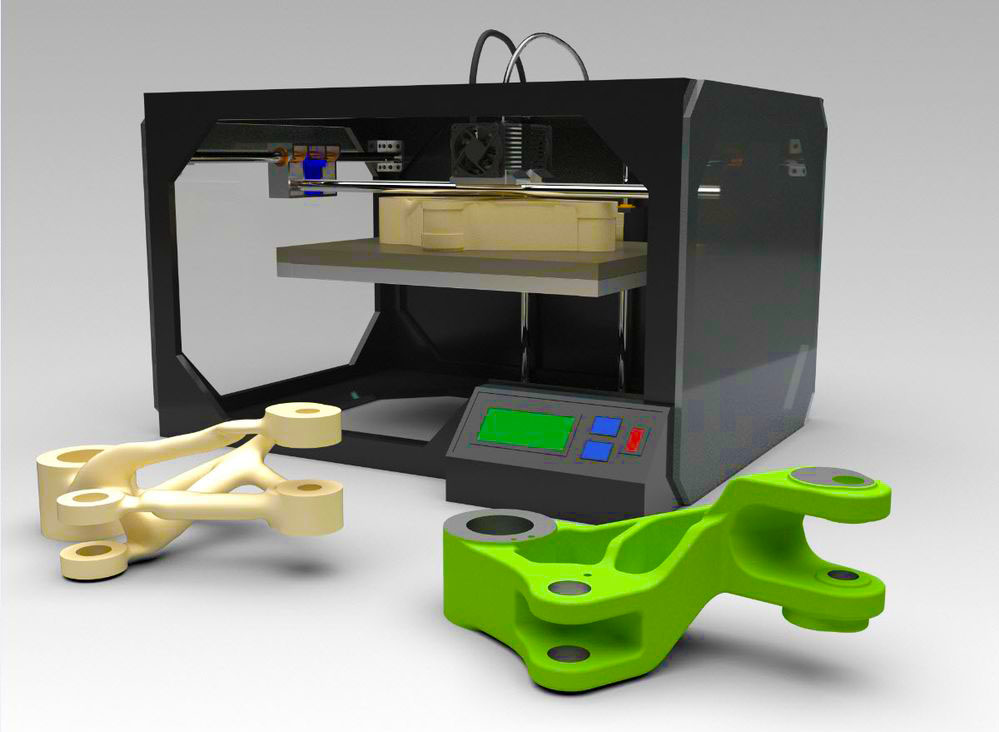 If earlier desktop photopolymer printers had modest pad sizes and, accordingly, their production potential was not very high, then this year a number of models with a large print area and high detail were introduced, for example, the Phrozen Sonic Mega 8K printer model.
If earlier desktop photopolymer printers had modest pad sizes and, accordingly, their production potential was not very high, then this year a number of models with a large print area and high detail were introduced, for example, the Phrozen Sonic Mega 8K printer model.
Printing models on the photo lasted 3.5 hours. It is not difficult to calculate the performance of a printer. In this case, even one printer is a mini-factory and is capable of solving serious production problems. It is also important to note that unlike FDM/FFF printers, all photoresin 3D printers are inherently universal - you can print on them with any resins available on the market or even those that will appear in the future.
Not surprisingly, the creators of 3D printing trusses were inspired by the huge opportunities that were opening up, and many small-scale productions were created based on such equipment. For example, the British company Photocentric has opened the largest such center in Europe based on its LC Magna model. It came in handy during the pandemic, when it was necessary to urgently establish the production of elements necessary for the treatment of patients, for example, replaceable valves for ventilators.
It came in handy during the pandemic, when it was necessary to urgently establish the production of elements necessary for the treatment of patients, for example, replaceable valves for ventilators.
Unfortunately, it is also not complete without significant disadvantages, but let's talk about everything in order. First of all, this is the process of post-processing of printed models, which consists of washing the models in alcohol and subsequent illumination in a UV camera. Without these procedures, the model will not acquire the final quality. These processes cannot be automated, they require a lot of labor, and this must be taken into account when choosing equipment. In addition, it should be taken into account that the cost of photopolymer resin is on average 3 times more than plastic for 3D printing, and, accordingly, the cost of the resulting products will be higher. Another factor to consider is the need for special preparation of the installation site for printers, the availability of high-quality ventilation and the possibility of waste disposal.








